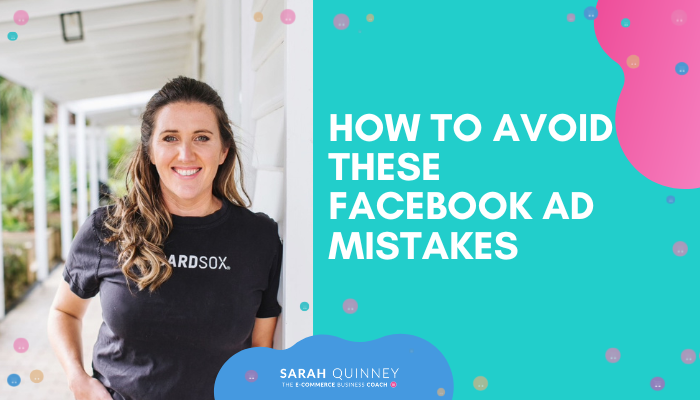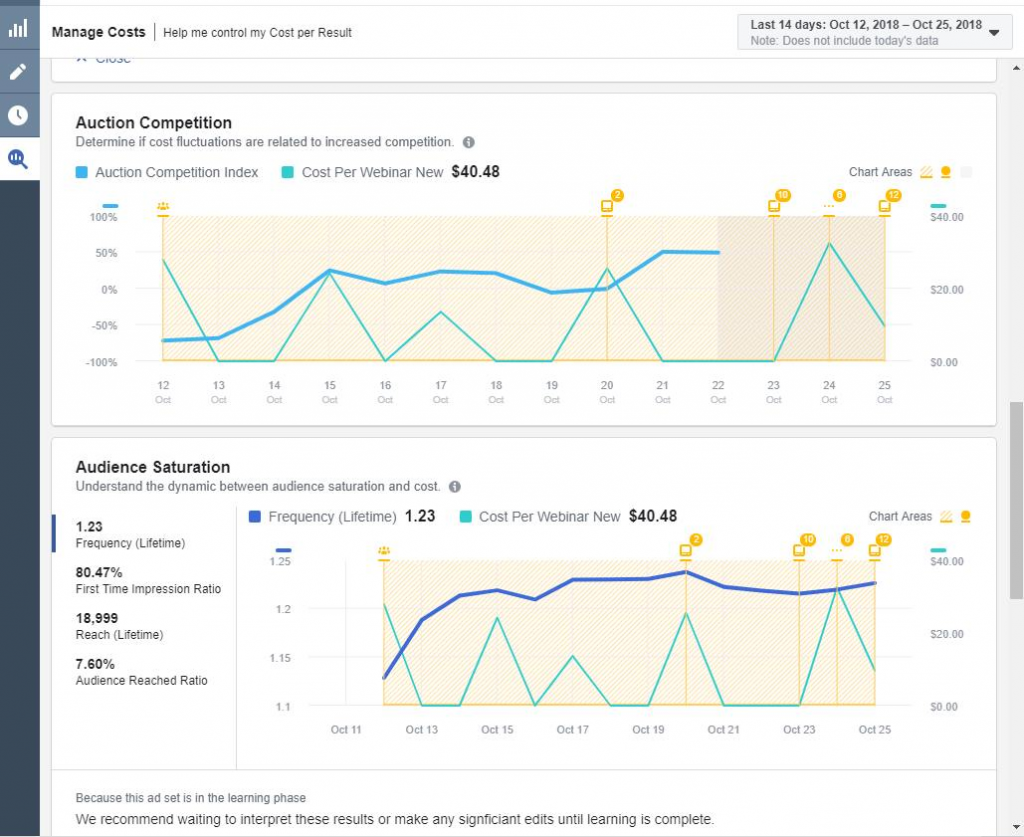
How to Avoid These Facebook Ad Mistakes
Facebook advertising is essentially a gold mine for many business owners. The audience nearly infinite, Facebook is home to social profiles of people of every age, demographic, location, salary, and more. If you own a business targeted toward virtually any segment of the world’s population, you can take advantage of Facebook advertising.
The thing about Facebook advertising, though, is that the majority of people don’t know how to use it properly. There are an incredible number of options and customizations within the platform, and knowing how to properly use them is crucial if you’re looking to see a great ROI.
There are a number of common mistakes business owners are making, and you may not be so innocent. For this reason, we’re giving you some pointers on how to avoid these Facebook ad mistakes.
Mistake #1: Jumping in head first
First thing is first. To enter the world of Facebook ads, you need to know what you’re getting yourself into. A general and common lack of knowledge surrounding the platform is the reason I’m even writing this article in the first place. The fact that you’re here is a great sign, as this is the perfect place to start.
Before getting started with Facebook ads, be sure that your marketing strategy is clear. Translation: Set goals. To begin, you need to have clear, well-defined goals, a timeline, and a budget. Ask yourself these questions:
- What is my goal with Facebook advertisements (Traffic? Sales? Page “Likes?” Views? Etc.)?
- By when do I want to complete this goal?
- What is my budget?
A lack of any one of these three items will result in an ad campaign that’s immeasurable and impossible to track. In the end you’ll want to know if your campaign was successful, right? Knowing these three things will start you off on the right foot.
Mistake #2: Targeting the wrong audience
How do you expect to reach your goals if you’re targeting a completely wrong segment of people? To be truly successful with Facebook ads, you MUST know your audience. Facebook allows for a lot of really cool targeting, but you have to know your people if you want to take advantage of all it offers.
Go back to your original business plan. Have you followed everything as far as product and service offerings go? If so, your audience is most likely still the group of people outlined in your original plan. Speak to them. Target them. Show them what they want to see.
Using Facebook’s Core Audience program, you can narrow down your target audience by location, demographics, interests, behaviors, and connections, and you’re able to get as specific as you please. Feel free to get creative with it, and don’t be afraid of poor results. Every campaign teaches you something.
Plus, there’s always the option of A/B testing, which we’ll talk about in mistake #4.
Mistake #3: Using a bad pool size
I’m sorry to bore you with more on the subject of target audiences, but doesn’t that show you how important they are? Let me go back to them for just a moment to remind you that pool size is huge.
You need to narrow down your audience to specifically align with your product offering, but you don’t want to make it too small. Using a target audience that’s too narrow can be just as detrimental both money and results-wise as sending your ads out to the entire world.
Do your wallet a favor and carefully select the amount of people you send your ad to. Don’t worry, with proper research and planning, your target audience size should come naturally. Just be mindful.
As time goes on, figuring this out will get easier. Once you have an active and established ad audience, take advantage of Facebook’s Lookalike Audiences feature. With this, you can find new audience members that are similar to those you’re already targeting. It’s a great way to expand your network to include more of the same, like minded people already showing interest in your products.
Mistake #4: Not split testing
Split testing is a HUGE way to determine whether your campaign was really as successful as you thought it would be. You’re able to figure out what worked best with your audience, which is a wonderful way to know what to do for next time. Trial and error is where it’s at.
To split test, you’ll want to first determine what you wish to measure. Would you like to know which copy resonates with your audience? How about which image they find more interesting? Whatever you want to test, focus on that one thing, changing JUST that part of your advertisement.
Basically, if you’re testing copy, everything about both ads will be identical, except for the copy.
If you’re testing images, everything about both ads will be identical, except for the images.
In testing your ad this way, you’re able to determine exactly which version was more well received, without wondering if different videos or sets of imagery had anything to do with it.
Though it will cost you a few extra dollars to split test, it is more than worth it to know what resonates with your audience at a higher level. It will earn you money in the long run, so you might as well figure it out now.

Image courtesy of AdWeek.
Mistake #5: Ignoring available insights and metrics
Facebook Ad Manager isn’t just a place to post ads and then forget about them. It’s also a place to measure what you’ve done and track any progress. If split testing, this will be a MUST, though it’s important regardless.
With Facebook Ads Manager, you can measure results including reach, clicks, sales, and more. Choosing which metrics you’d like to view, you can compare different key facets of your ads to determine which ad approaches are worth repeating. Compare and contrast to uncover trends and determine which type of content performs best with your specific audience.
Be sure to customize your insights in order to focus on your goals.

Image courtesy of NewsFeed.
Mistake #6: Lack of credibility
When people click your ad, where does it take them?
So many times I’ve come across Facebook ads that, when clicked, took me to a page that was completely irrelevant to the advertisement.
If you run an ad for a product for sale on your website, clicking the link better take users to that specific product page. If the link takes them to the home page, you’re committing a huge no-no and it will one million percent cost you sales. People don’t want to have to search your site to find that special item that was shown to them. They want to access the page immediately.
Be sure your ad links reflect the ads themselves.
Mistake #7: Using boring text and imagery
Ads need to have a hook. It’s as simple as that. Your ads must grip the audience and entice them to learn more or follow through with whatever CTA your ad may have.
If you use boring copy, images, or videos, you’re not going to receive hits on your ad. Consider investing in a copywriter or marketing expert to determine what will resonate the most successfully with your audience. The better you know what your audience is looking for, the more success you’ll have with creating targeted ad content. Again, split testing will help you with this.
Additionally, refrain from creating confusing ads. Your ad should clearly state or show the CTA. Your audience should be able to see your ad and know exactly what it’s for.
Finally, don’t expect overnight results
After providing you with the above information, I want to leave you with the most important snippet of them all: don’t expect ad results overnight.
This is one of the biggest mistakes that I see people making.
You’re not going to list an ad and wake up the next morning to 10 grand in sales. If you’re expecting fast results, you’re going to be disappointed! It just doesn’t work that way, especially at the beginning. The Facebook Ad learning curve is steep and requires practice and repetition.
When you first begin posting ads, let them sit for a bit. Don’t edit them every 2 hours because you’re not receiving any clicks. You need to let them sit in order to truly understand how specific content is performing. In making updates, you’re only hindering yourself and the information you’re going to receive.
Sit back, relax, and just ride out the ad window. This is how you’re going to learn the most about your audience. Soon enough, you’ll fall into your perfect groove and will be effectively speaking to your audience. Until then, keep on advertising!
Sarah

P.S. Are you ready to grow your e-commerce business?
Here are 3 options to start and scale your E-Commerce Brand with Sarah:
1.The E-Commerce Women In Business Mastermind – Your E-Commerce Membership Community with hands-on dream team support to start and scale your online store.
2. VIP 1:1 E-Commerce Coaching – My Blue Ribbon and Private 1:1 E-Commerce coaching for established brands looking for next level growth and support.
3. Facebook Ads for E-Commerce Stores. Learn how to manage your own ads, or employ our Facebook Ad Strategist to scale your brand.
